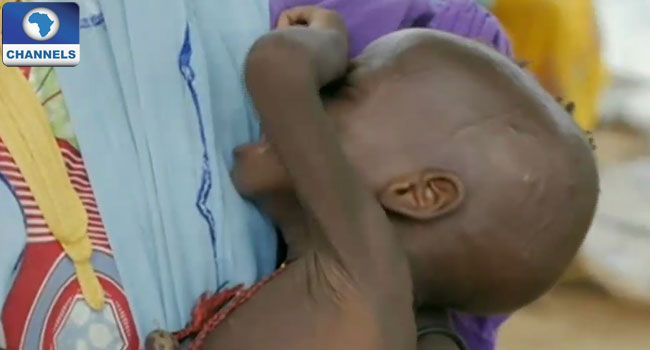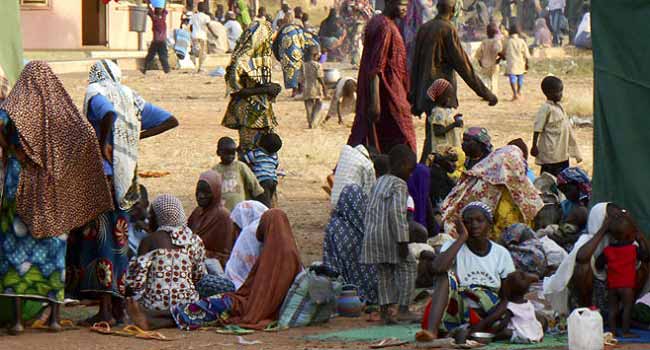
The figure was contained in a report of humanitarian relief intervention by the National Emergency Management Agency (NEMA) released recently.
It also says that about 29, 581 Nigerians, who fled their communities in Borno, Yobe and Adamawa to Republic of Niger and Cameroun as a result of insurgents’ activities had voluntarily returned to Nigeria.
‘Provided With Humanitarian Relief’
According to the report, 13,046 Nigerians returned from Niger Republic in May, 2015 and were received in Geidam, Yobe State while Between April and December, 2015 NEMA received about 16,595 Nigerians that have voluntarily returned from Cameroon through the Sahuda border crossing area near Mubi in Adamawa State.
“Some of the Nigerians that fled to Neighbouring countries (Niger, Chad and Cameroun) were provided with humanitarian relief support by the Federal Government of Nigeria through NEMA to alleviate their suffering.
“The displaced Nigerians have also received humanitarian supports from the host governments, the United Nations High Commission for Refugees (UNHCR), the host communities and Nigerian citizens living in the three host countries’’ the report read.
The spokesman for the agency, Sani Datti, said that of the 239,834 refugees, 20,804 of them are living in the Republic of Chad, 80,709 in the Republic of Cameroun and 138,321 in the Republic in Niger.
The agency further said that it had adopted a monthly Humanitarian Coordination Meeting; a forum that consists of relevant Federal government Agencies, UN Systems and International Non-Government Organisations (INGOs) to undertake analysis of causes of humanitarian situations, conduct need assessments, identify priorities and provide humanitarian interventions based on their respective mandates.
According to the agency, the system operates through different sectors lead by national Ministries Department and Agencies and co-lead by UN Agencies.
The report pointed out that due to the successes recorded by the Nigerian Military with the support of Multi-National Joint Military Task Force (JTF) in the fight against Boko Haram insurgents, the humanitarian dashboard was fast changing.
“The focus is gradually shifting towards Reconstruction, Rehabilitation, Resettlement, Recovery and dignified return of IDPs back home while process for the return of Nigerian refugees from neighboring countries is equally on-going.
“NEMA will continue to support and work towards bridging the identified gaps in humanitarian response through enhanced coordination, capacity building and strengthening of collaboration with the affected States and relevant stakeholders including line MDAs, local and international response organizations and the UN system,” the report added.

Boko Haram has, in the past seven years, carried out a campaign to establish an Islamic State and also end Western education in the region.
It has attacked communities and villages, taking people hostage, mostly women and children.
At least two million persons have been displaced, with over six million now needing help inform of food.
Alarmed by severe malnutrition in the region triggered by the lack of food for the displaced persons, UN agency, UNICEF, has called for more aid in the region in form of nutritious foods.
UN has said that over 75,000 children, pregnant women and nursing mothers risk death due to malnutrition.



